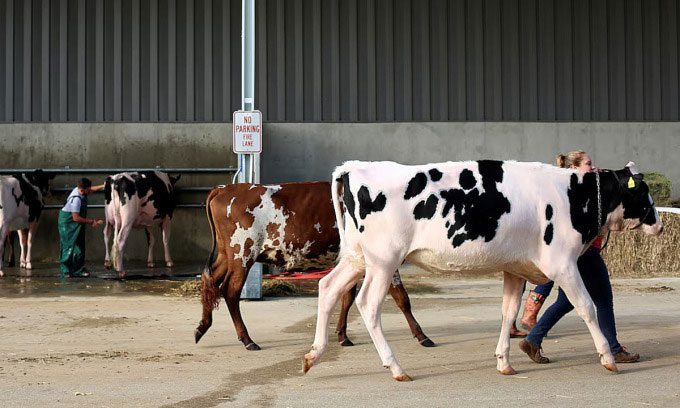The WHO has reported the detection of a highly concentrated H5N1 avian influenza virus in the milk of infected cows, although it remains unclear how long the virus can survive in this medium.
This information was shared by Wenqing Zhang, head of the World Health Organization’s (WHO) global influenza program, during a meeting on April 19. Specifically, experts have found “very high levels of the virus in raw milk” and are currently investigating how long the virus can persist in milk.
Zhang mentioned the case of a person in Texas (USA) who contracted avian influenza after coming into contact with a dairy herd earlier in April. This marks the second reported case of H5N1 in humans in the USA and the first case linked to contact with infected mammals.
According to this expert, the concern is that the virus appears to be seeking new hosts, and its transmission to mammals indicates that it is getting closer to humans.
Meanwhile, the Texas Department of Health has stated that the infection status in livestock does not pose a threat to the commercial milk supply, as producers are required to dispose of milk from infected cows. The pasteurization process will also eliminate the virus. Zhang emphasized the importance of ensuring food safety, including the consumption of pasteurized milk and dairy products.

Cows at the World Dairy Expo in Madison, Wisconsin, USA, October 2018. (Photo: Reuters).
The H5N1 Avian Influenza first emerged in 1996, but since 2020, the number of outbreaks in birds has surged exponentially. Additionally, the number of infected mammals has also increased. The virus has caused the death of tens of millions of poultry, wild birds, and terrestrial and marine mammals.
From 2003 to April 1 of this year, the WHO has recorded 463 deaths and 889 H5N1 infections in humans across 23 countries, resulting in a mortality rate of 52%, while the mortality rate for typical flu is usually 1-4%. Zhang noted that infections in Europe or the USA in recent years have presented with mild symptoms. To date, there is no evidence of H5N1 transmission from person to person, primarily spreading through contact with infected animals.
Currently, there are nearly 20 licensed vaccines for H5N1 influenza that can be used in the event of a pandemic, and these vaccines can be adjusted to match the specific circulating virus strain.


















































